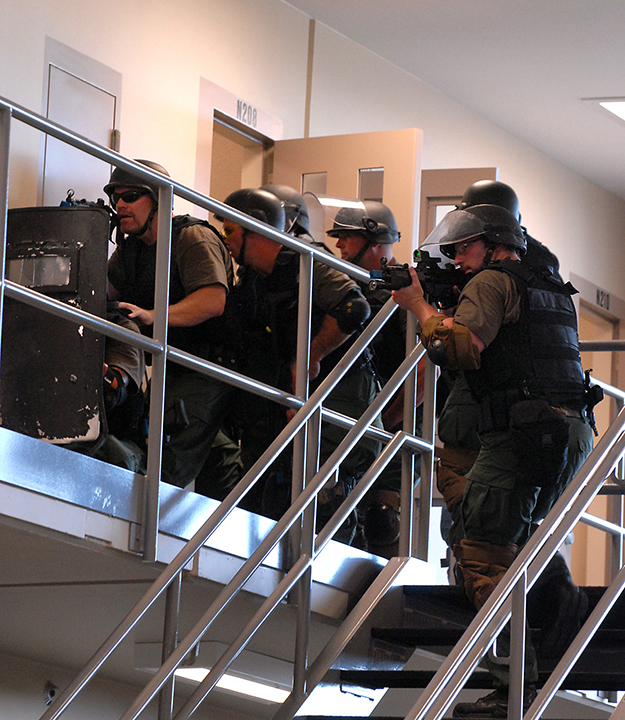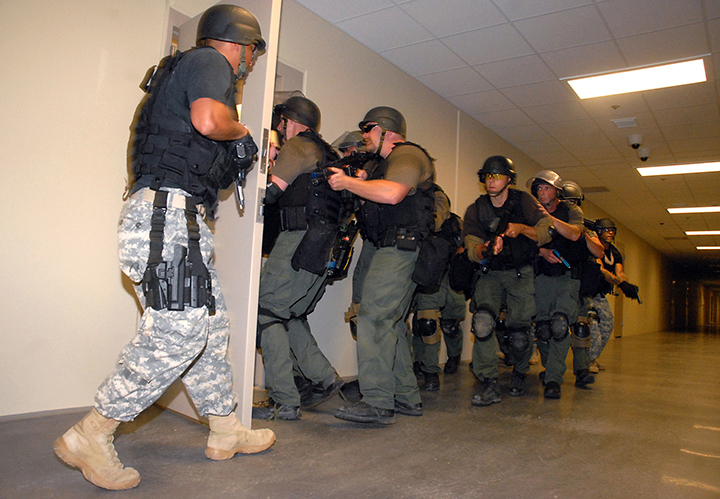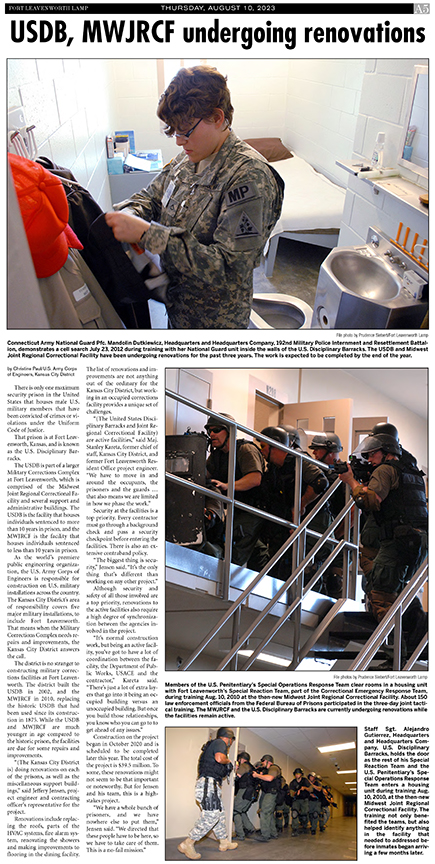by Christine Paul/U.S. Army Corps of Engineers, Kansas City District
There is only one maximum security prison in the United States that houses male U.S. military members that have been convicted of crimes or violations under the Uniform Code of Justice.

That prison is at Fort Leavenworth, Kansas, and is known as the U.S. Disciplinary Barracks.
The USDB is part of a larger Military Corrections Complex at Fort Leavenworth, which is comprised of the Midwest Joint Regional Correctional Facility and several support and administrative buildings. The USDB is the facility that houses individuals sentenced to more than 10 years in prison, and the MWJRCF is the facility that houses individuals sentenced to less than 10 years in prison.
As the world’s premiere public engineering organization, the U.S. Army Corps of Engineers is responsible for construction on U.S. military installations across the country. The Kansas City District’s area of responsibility covers five major military installations, to include Fort Leavenworth. That means when the Military Corrections Complex needs repairs and improvements, the Kansas City District answers the call.
The district is no stranger to constructing military corrections facilities at Fort Leavenworth. The district built the USDB in 2002, and the MWJRCF in 2010, replacing the historic USDB that had been used since its construction in 1875. While the USDB and MWJRCF are much younger in age compared to the historic prison, the facilities are due for some repairs and improvements.
“(The Kansas City District is) doing renovations on each of the prisons, as well as the miscellaneous support buildings,” said Jeffery Jensen, project engineer and contracting officer’s representative for the project.
Renovations include replacing the roofs, parts of the HVAC systems, fire alarm system, renovating the showers and making improvements to flooring in the dining facility. The list of renovations and improvements are not anything out of the ordinary for the Kansas City District, but working in an occupied corrections facility provides a unique set of challenges.
“(The United States Disciplinary Barracks and Joint Regional Correctional Facility) are active facilities,” said Maj. Stanley Kareta, former chief of staff, Kansas City District, and former Fort Leavenworth Resident Office project engineer. “We have to move in and around the occupants, the prisoners and the guards … that also means we are limited in how we phase the work.”
Security at the facilities is a top priority. Every contractor must go through a background check and pass a security checkpoint before entering the facilities. There is also an extensive contraband policy.
“The biggest thing is security,” Jensen said. “It’s the only thing that’s different than working on any other project.”

Although security and safety of all those involved are a top priority, renovations to the active facilities also require a high degree of synchronization between the agencies involved in the project.
“It’s normal construction work, but being an active facility, you’ve got to have a lot of coordination between the facility, the Department of Public Works, USACE and the contractor,” Kareta said. “There’s just a lot of extra layers that go into it being an occupied building versus an unoccupied building. But once you build those relationships, you know who you can go to to get ahead of any issues.”
Construction on the project began in October 2020 and is scheduled to be completed later this year. The total cost of the project is $39.5 million. To some, these renovations might not seem to be that important or noteworthy. But for Jensen and his team, this is a high-stakes project.
“We have a whole bunch of prisoners, and we have nowhere else to put them,” Jensen said. “We directed that these people have to be here, so we have to take care of them. This is a no-fail mission.”

This post was originally published on this site be sure to check out more of their content.








